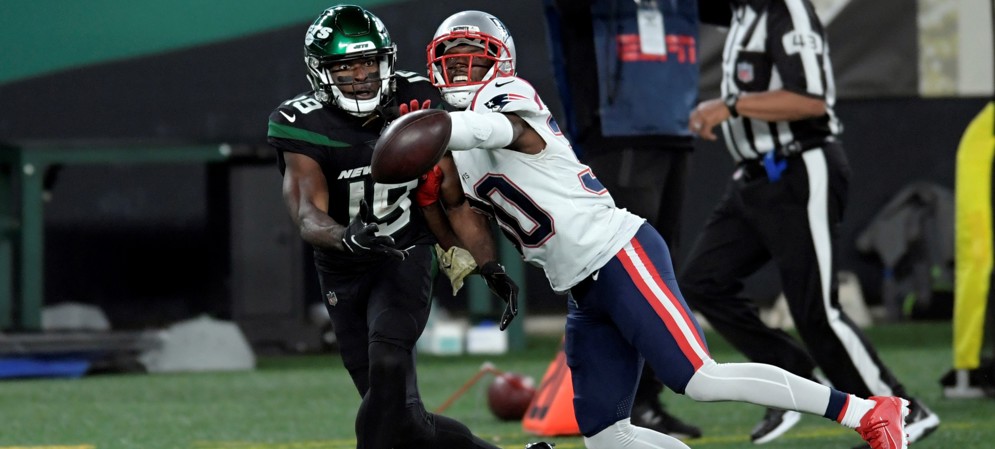The Extra Point Analyzing Defensive Pass Interference Fouls in the NFL and NCAA
November 20, 2020

Defensive pass interference (DPI) is one of the most impactful penalties in the NFL. With the way it is enforced, it is often suggested by fans and media alike that the rule should be modeled similarly to the NCAA. In the NFL, DPI is a spot foul, yielding an automatic first down to the team in possession. In NCAA football, the rule is slightly different — DPI is still a spot foul, but the maximum penalty is 15 yards.
How does DPI compare in the NFL and NCAA? NFL Football Operations breaks down three graphs that compare the two levels of football and provide further insights into the penalty.
Here’s the rate of DPI fouls per 100 pass attempts over the last several seasons.

Each season, there are more DPI calls per pass play between NCAA Power Five conference teams than in the NFL. One of the possible explanations is the increased weight of punishment is enough for NFL defenders to commit fewer fouls. For example, on deep pass plays, college defenders could aggressively prevent a catch to give up a smaller offensive gain than they would on a completed pass, even if DPI is called.
Next, here’s the percentage of overall penalties in a season that are DPI fouls.

Looking at all fouls committed in an NFL and NCAA season, a greater percentage of NCAA calls are DPIs, compared to the NFL.
Finally, below are penalty yards that result from DPI fouls.

The chart shows the variability of DPI penalty yards in the NFL compared to the NCAA with slightly more penalty yards at shorter distances in the NFL. Alternatively, 47.1% of NFL DPIs are 15 yards or more, while 56.1% of NCAA DPIs would be 15 yards or more, but they are capped at 15 yards.
Although the NFL’s lack of cap on penalty yards for DPI fouls increases the possible yardage impact, it could also decrease the frequency of these penalties.